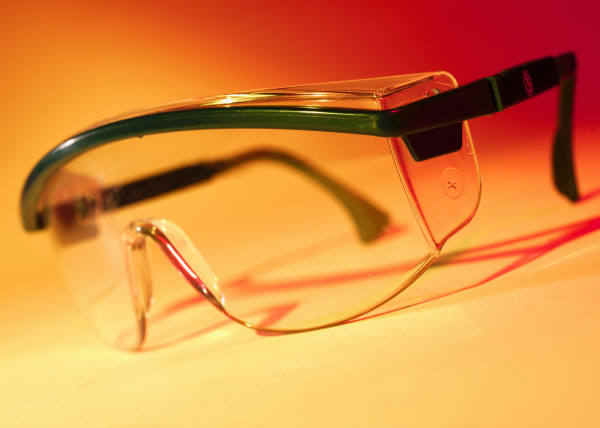How to Select the Right Protective Eyewear
Many tasks in the workplace or around the house call for proper protective eyewear. Since each job presents different hazards, it is important that you choose the correct safety equipment for the task at hand.

First, identify which hazards will be present in your work area. The most common hazard is impact from flying debris such as woodchips, metal shavings, rocks, dirt, tree branches, etc. These hazards are usually associated with woodworking, machining, grinding, drilling and yard work. Chemicals such as cleaners and degreasers are another hazard you may encounter. Many household chemicals can cause damage if they come in contact with your eye. Fumes from certain chemicals can also irritate your eyes and may require that you wear goggles or a face shield when handling them. Sanding and blasting may require that you wear a protective hood that covers your entire head and neck. Intense light and radiation from welding, torch cutting and soldering require specialized equipment to protect your eyes and skin.
Most of you won’t need to run out and buy a protective hood. However, whether you are working in a machine shop or mowing your lawn, you should have a good pair of safety glasses. When choosing a pair, you should make sure they fit you well and are made of quality materials.
Proper Fit
Taking the time to find eyewear that fits you comfortably can be frustrating, but it’s worth it. If you buy ill-fitting cheapies, you’re less likely to wear them, and they don’t do their best work in your pocket.
When you try on a pair of safety glasses, they should fit snug without pinching your nose or ears. Some styles can be adjusted. You should be able to move your head without the glasses sliding down your nose or pulling away from your face, even when looking straight down.
Safety glasses should fit close to your eyes and face. The frame should provide adequate blockage against debris, which can come at you from all angles and from any direction. If you wear prescription eyeglasses, realize that most frames are designed for fashion, not safety. So you may want to find protective eyewear that can fit comfortably over your glasses or wear a face shield. If you need to wear eye protection on a regular basis, I suggest you consult an optometrist about getting fitted for a suitable frame with impact-resistant prescription lenses.
Protective Eyewear Construction
Most protective eyewear from reputable manufacturers is made of quality materials. With that said, choose eyewear that looks and feels durable and complies with ANSI Z87.1, the American National Standard Institute’s standard for adequate protective eyewear. The frame is usually made of plastic and should have a side shield incorporated into the temple area. The side shield should fit close to your face to block debris. If you have prescription safety glasses, side shields are usually attached to the temple arm and can be added and removed as needed. Your employer or optometrist can provide side shields for your prescription safety glasses. The lenses should be made of polycarbonate or another impact-resistant plastic.
Caring for Your Eyewear
Before you start working, inspect the glasses for cracks or deep scratches, which can weaken the lenses and frame, making them less effective on impact. If you notice any damage to the eyewear, they should be replaced. Keep your safety glasses clean. Use a disposable lens-cleaning cloth or lens cleaner and a clean, soft, nonabrasive cloth. If you need to clean or defog your lenses while you are working, stop what you are doing, step away from your work area, and do not remove your safety glasses until you’re in a hazard-free location.
Dr. Jeff Pinkerton
I care for you.
Comments are closed.

[…] Your Eyes at Work and at […]